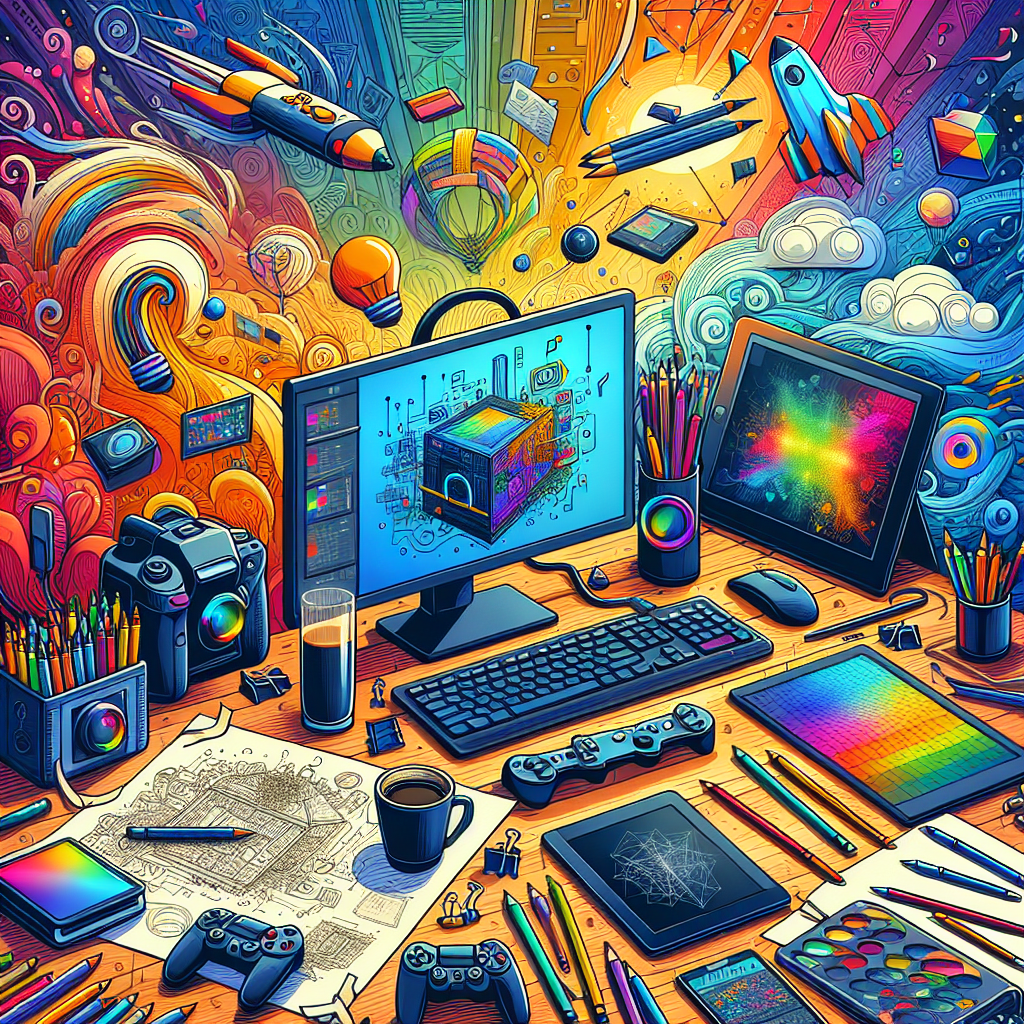Unlock Your Creativity: Must-Have Game Design Tools for Newcomers
Game design is a multifaceted discipline that blends art, technology, and storytelling. Whether you dream of creating the next blockbuster game or a charming indie gem, having the right tools can make all the difference in your creative journey. For newcomers venturing into this exciting field, the selection of essential game design tools can sometimes feel overwhelming. This article aims to unravel that complexity and present a curated list of must-have tools to help you unlock your creativity and kickstart your game design career.
Game Development Engines
1. Unity
Platform: Windows, macOS, Linux
Use Case: 2D and 3D game development
Unity is one of the most popular game engines available. Its versatility makes it suitable for creating both 2D and 3D games across various platforms, including mobile, PC, and consoles. Unity’s user-friendly interface and extensive documentation make it an excellent starting point for newcomers. Plus, the asset store provides a plethora of free and paid resources to help you get started.
2. Unreal Engine
Platform: Windows, macOS, Linux
Use Case: High-fidelity 3D game development
Unreal Engine is renowned for its stunning graphics and is widely used in the industry. While it may have a steeper learning curve than Unity, its Blueprint visual scripting system allows newcomers to create complex game logic without extensive coding knowledge. The engine is free to use until your game earns a certain revenue threshold, making it an appealing option for indie developers.
Art and Animation Software
3. Aseprite
Platform: Windows, macOS, Linux
Use Case: Pixel art creation
For those who want to create 2D pixel art games, Aseprite is a beloved choice among indie developers. It specializes in pixel art and animation, providing a straightforward and intuitive interface perfect for beginners. Users can create animated sprites and export them directly for use in game projects.
4. Blender
Platform: Windows, macOS, Linux
Use Case: 3D modeling and animation
Blender is a powerful, open-source software for 3D modeling, animation, and rendering. While it can initially seem daunting, Blender’s online community offers countless tutorials for newcomers to follow. It’s an excellent option for producing assets for 3D games, and best of all—it’s completely free!
Sound Design Tools
5. Audacity
Platform: Windows, macOS, Linux
Use Case: Audio editing and recording
Good sound design is crucial for immersive gameplay. Audacity is a free, open-source audio editing software that allows you to record and manipulate sound effects and music for your games. Its simple interface makes it accessible for beginners, while its robust features make it suitable for more advanced users.
6. GarageBand
Platform: macOS, iOS
Use Case: Music composition
GarageBand is a great entry point for those looking to craft original soundtracks. With a user-friendly interface and a range of virtual instruments, loops, and effects, it’s an excellent tool for creating music that enhances the emotional impact of your game.
Collaboration and Project Management
7. Trello
Platform: Web, iOS, Android
Use Case: Project management
For any game developer, organization is key. Trello is a simple and effective project management tool that allows teams to collaborate by creating boards, lists, and cards to track tasks. It’s easy to use, and even individuals can benefit from it by structuring their game development process.
8. GitHub
Platform: Web, Windows, macOS, Linux
Use Case: Version control and collaboration
If you plan to collaborate with others or just want to keep track of changes to your project, GitHub is an invaluable tool. It provides version control, allowing you to manage updates and track the history of your project seamlessly. For newcomers, understanding GitHub may take some time, but it’s a critical skill in today’s collaborative development environment.
Learning Resources
9. Coursera, Udemy, and YouTube
Use Case: Online learning
Platforms like Coursera and Udemy offer courses tailored to beginners in game design. YouTube is another treasure trove of tutorials, providing step-by-step guides on everything from using specific tools to understanding game mechanics. Leveraging these resources can fast-track your learning and enhance your skills.
Conclusion
Embarking on a journey into game design can be both exhilarating and intimidating for newcomers. However, with the right tools at your disposal, you can streamline your creative process and focus on bringing your vision to life. Unity and Unreal Engine will serve you well for game development, while Aseprite and Blender can help you craft visually stunning assets. Don’t forget about sound design tools like Audacity and GarageBand to enrich the player experience. Lastly, effective project management using Trello and version control with GitHub are essential for organizing your efforts.
Remember, every great game starts as an idea, so embrace your creativity, leverage these tools, and start bringing your interactive stories to life!




